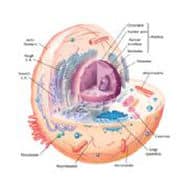Description
Includes your full personal report and plan from Jo, with a Zoom consultation to run through the diagnosis and prognosis.
Differentiate Between Coeliac Disease and Gluten Sensitivity
The Coeliac and Gluten Sensitivity test is a comprehensive serologic profile that uses widely accepted immunologic biomarkers to aid in the diagnosis of Coeliac disease (CD) and gluten sensitivity. Epidemiologic studies estimate a worldwide prevalence of CD of approximately 1:100 individuals, with a considerable proportion of patients remaining undiagnosed and untreated.1 Gluten sensitivity is estimated to affect 0.6-10.6% of the population.2
What is the Coeliac and Gluten Sensitivity test?
The Coeliac and Gluten Sensitivity test is a blood test that measures important markers to aid in the diagnosis of CD including Total IgA, Anti-Tissue Transglutaminase IgA (tTG IgA), Anti-Deamidated Gliadin IgA (DGP IgA), and reflex Anti-Endomysial IgA (EMA IgA). Gluten sensitivity is assessed via Anti-Gliadin IgA and Anti-Gliadin IgG. Along with these results, Genova’s unique report configuration provides a simple diagnostic algorithm to aid clinicians in assessing likelihood of disease.
When should testing for Coeliac and Gluten Sensitivity be considered?
Coeliac disease is defined as an autoimmune enteropathy of the small intestine, caused by exposure to dietary gluten in genetically pre-disposed individuals. In susceptible individuals, gluten ingestion generates an inflammatory reaction predominantly centered in the upper parts of the small intestine. This mucosal injury will eventually reduce the intestinal absorptive area and interfere with uptake of micronutrients.3
Conditions and symptoms associated with Coeliac disease1,4,5
- Chronic diarrhea with weight loss
- Steatorrhea
- Postprandial abdominal pain
- Bloating
- Malabsorption with nutrient deficiencies (iron, B12, calcium)
- Irritable bowel syndrome
- Elevated liver enzymes
- Cerebellar ataxia
- Peripheral neuropathy
- Type I Diabetes
- Autoimmune hepatitis
- Autoimmune thyroiditis
- Infertility
- Dermatitis herpetiformis
- Sjogren syndrome
- Addison’s disease
- Parathyroid disorders
- Growth hormone deficiency
- Primary biliary cirrhosis
- Primary sclerosing cholangitis
Non-coeliac gluten sensitivity (NCGS) is defined as gastrointestinal symptoms and extra-intestinal symptoms that are triggered by gluten consumption, in the absence of Coeliac-specific antibodies and villous atrophy, as well as any allergy-related processes. Findings from the clinical history, symptoms, serologic and histologic tests are required in order to reach an accurate diagnosis.1 A diagnosis of NCGS cannot be made until wheat allergy and CD have been eliminated.6 Clinicians may consider adding the IgE Food Antibody test that includes the IgE wheat biomarker for wheat allergy. The diagnosis of NCGS is confirmed by a food provocation test. The only known antibodies observed in NCGS patients are anti-gliadin antibodies which occur in only half of the patients.6
Conditions and symptoms associated with gluten sensitivity1,7
- Irritable bowel syndrome
- Abdominal bloating
- Abdominal pain
- Diarrhea
- Nausea
- Aphthous stomatitis
- Alternating bowel habits
- Constipation
- “Foggy mind” or inability to concentrate
- Fatigue
- Headache
- Anxiety
- Joint pain
- Skin rash
Testing should be performed while the patient is still on a gluten-containing diet.1 The exception is follow-up testing for monitoring treatment efficacy.
Ordering the test
The Coeliac and Gluten Sensitivity test can be ordered as a stand-alone test or bundled with other profiles. Often times, clinicians will bundle several smaller profiles in order to see a more complete picture of the patient’s immune-mediated response. Profiles that can be bundled include:
| Profile | Includes |
|---|---|
| IgG Foods | 87 foods plus total IgE |
| IgG Vegetarian | 21 foods plus total IgE |
| IgG Spices | 24 spices plus total IgE |
| IgE Foods | 19 foods plus total IgE |
| IgE Moulds | 15 molds plus total IgE |
| IgE Inhalants | 25 inhalants specific to the UK region plaus total IgE |
| Coeliac and Gluten Sensitivity | Total IgA, tTG IgA, DGP IgA, EMA IgA, Anti-Gliadin IgG & IgA |
What advantage does the Coeliac and Gluten sensitivity test offer compared to other diagnostics?
Intestinal biopsy is considered the gold standard for the diagnosis of Coeliac disease. International guidelines suggest that measuring immunologic analytes and genetic markers are favored to increase detection of CD. The European Society for Pediatric Gastroenterology Hepatology and Nutrition (ESPGHAN) introduced a revised guideline for CD in children based on the optimization of antibody assays. According to this guideline, children can be diagnosed with CD without a duodenal biopsy when presenting with suspicious symptoms, a strongly elevated tTG-IgA (>10 confirmed cut-off value), confirmed by a positive EMA-IgA on a separate occasion, and positive genetic testing (HLA-DQ2 and /or HLA-DQ8).8 Genova does not offer the HLA-DQ2/DQ8 genetic markers.
Genova’s Methodology
Genova’s Coeliac and Gluten Sensitivity Panel is run on an automated platform called Phadia 250. This is an FDA-cleared fluorescence enzyme immunoassay and, therefore, FDA-cleared reference ranges are provided.
What can clinicians and patients expect from Coeliac and Gluten Sensitivity testing?
Clinical management of the patient with Coeliac disease involves strict, lifelong elimination of gluten. Patients with gluten sensitivity may be able to tolerate small amounts of gluten over time after an initial period of elimination.
Please visit our IgG, IgE, and Coeliac Tests Prep page prior to ordering the test to learn about medications that may impact test results, length of exposure to antigens, pediatric testing, and diseases that may affect antibody levels.
References
- Elli L, Branchi F, Tomba C, et al. Diagnosis of gluten related disorders: Celiac disease, wheat allergy and non-celiac gluten sensitivity. World journal of gastroenterology : WJG. 2015;21(23):7110-7119.
- Catassi C, Alaedini A, Bojarski C, et al. The Overlapping Area of Non-Celiac Gluten Sensitivity (NCGS) and Wheat-Sensitive Irritable Bowel Syndrome (IBS): An Update. Nutrients. 2017;9(11).
- Castillo NE, Theethira TG, Leffler DA. The present and the future in the diagnosis and management of celiac disease. Gastroenterology report. 2015;3(1):3-11.
- Rubio-Tapia A, Hill ID, Kelly CP, Calderwood AH, Murray JA. ACG clinical guidelines: diagnosis and management of celiac disease. The American journal of gastroenterology. 2013;108(5):656-676; quiz 677.
- Kelly CP, Bai JC, Liu E, Leffler DA. Advances in diagnosis and management of celiac disease. Gastroenterology. 2015;148(6):1175-1186.
- Czaja-Bulsa G. Non coeliac gluten sensitivity – A new disease with gluten intolerance. Clinical nutrition (Edinburgh, Scotland). 2015;34(2):189-194.
- Barbaro MR, Cremon C, Stanghellini V, Barbara G. Recent advances in understanding non-celiac gluten sensitivity. F1000Research. 2018;7.
- Husby S, Koletzko S, Korponay-Szabo IR, et al. European Society for Pediatric Gastroenterology, Hepatology, and Nutrition guidelines for the diagnosis of coeliac disease. Journal of pediatric gastroenterology and nutrition. 2012;54(1):136-160.
Test Type: Blood Test










Reviews
There are no reviews yet.